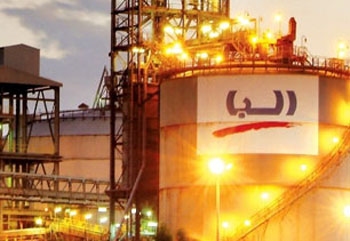 Business & Finance Club - Bahrain : Bahrain’s largest industrial firm, Aluminium Bahrain (Alba), is looking expand into new markets as it competes to hold its place in an increasingly competitive regional market.
In large part due to the global economic downturn, Alba recorded a net loss of $220m in 2009, a sharp turnaround from the $781.9m profit it posted the year before. Late last month Mumtalakat Holding, the government-owned investment company that includes Alba and all Bahrain’s non-oil state-owned firms, announced losses of $487m for 2009.
However, in a recently published report, Bahrain’s Economic Development Board (EDB), put the 2009 results firmly into perspective. According to the report, issues last month, the Kingdom’s economy expanded by 70% over the past decade, with the manufacturing sector a major contributor to growth. During the previous five years up until 2008, manufacturing output rose by 80% and while industry was affected by the global recession, it managed to avoid the worst of the downturn, said the EDB.
Mumtalakat said Alba dipped into the red in 2009 partly because of its need to take into account unrealised losses on derivatives and a one-time restructuring charge. It said that despite last year’s decline in prices in the global aluminium market, Alba was able to generate positive cash flows.
Last year’s results were a rarity for the company. Established in 1968, Alba was one of the first large-scale industrial developments in the Gulf. Since production began in 1971 it has expanded output from an initial 56,000 tonnes to its present capacity of 870,000, placing it among the world leaders in aluminium production.
In order to maintain that position, Alba is aiming to boost output and broaden its market base. The company has targeted Europe as a major area for expansion, as a number of aluminium producers on the continent are currently scaling back or even halting operations.
“The European market presents a fantastic growth opportunity for Alba as we remain committed towards increasing the global presence of our product portfolio,” Laurent Schmitt, Alba’s chief executive, said in an interview in late June. “Presently, sales to Europe occupy nearly 10-15% of our output, and we have already outlined a strategy to develop this market further and profit from the opportunities available.”
As part of that strategy, Alba is looking to ramp up production levels, announcing plans to expand capacity to 1.4m tonnes by the end of 2014 by constructing a new plant and raising the output of existing lines.
Alba’s plans for expansion come as the region’s aluminium sector looks set to become more crowded. On July 11, Emirates Aluminium, a joint venture between Abu Dhabi's Mubadala Development Company and Dubai Aluminium Company, announced it had secured loans totalling some $737m to help fund the expansion of its massive smelter complex at Al Taweelha in Abu Dhabi.
The Al Taweelha plant will have an estimated production capacity of 1.5m tonnes a year when it completes its second phase, expected in 2013-14. This is more than double the output levels projected when the plant comes on line at the end of 2010. ??
Alba officials have played down the potential heating up of competition in the regional and international market, with Tim Murray, the company’s chief financial officer, saying that rising demand had left enough room for growth in the industry.
“There is room for more players to satisfy a growing appetite for using aluminium as the preferred metal of choice in the automotive sector, construction, real estate, packaging and others,” Murray told a conference in Oslo on July 22. “Experts estimate this demand to grow at a rate of nearly 4% to 5% per year.”
Whether this rate can be achieved and maintained will depend on how various industries perform, particularly in Europe – Alba’s expansion target – where the spectre of recession again looms.
Despite increasing optimism over a regional and global recovery, aluminium prices have been volatile, falling from more than $2400 per tonne in April to just below $2000 as of mid-July, a decline prompted by easing demand from the automotive, aviation and construction sectors. |